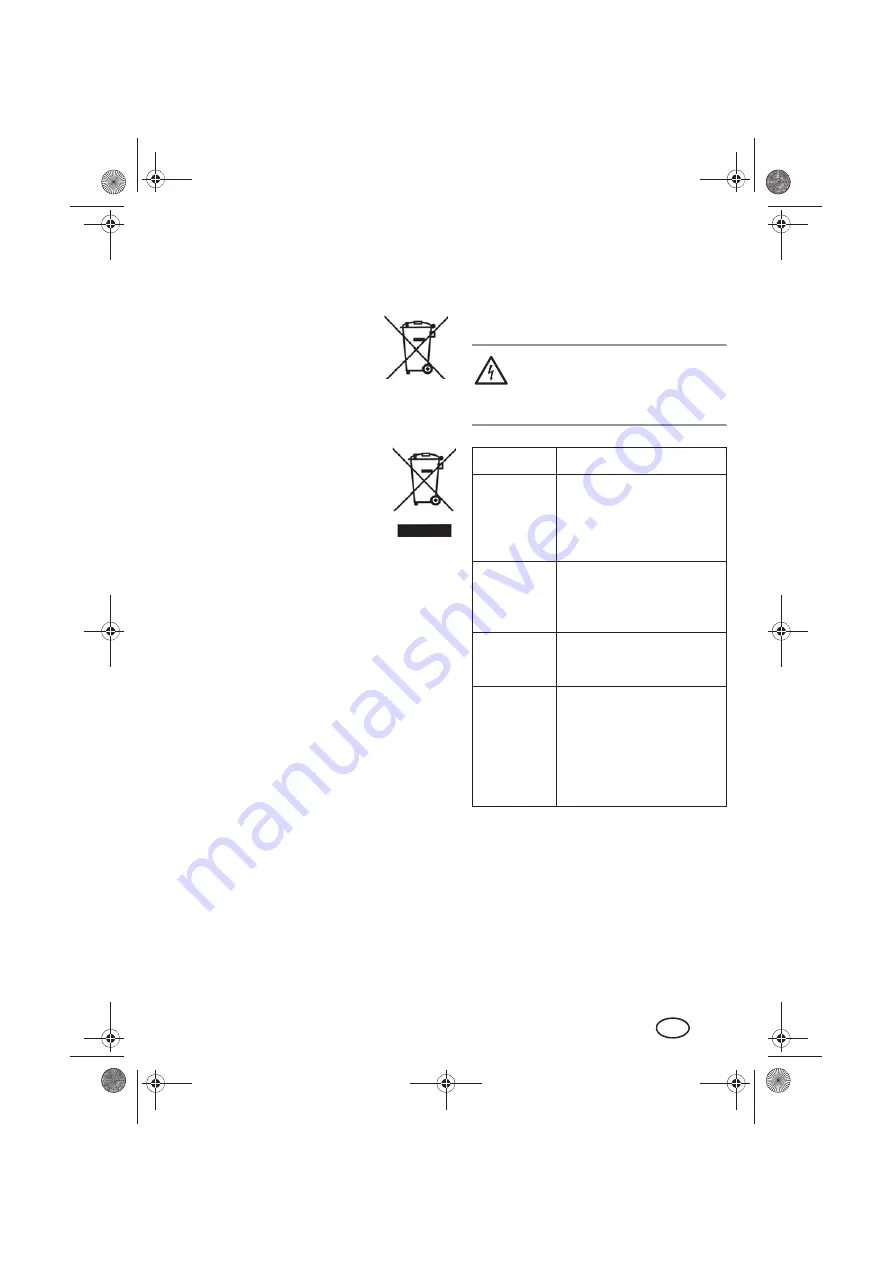
53
GB
pair of pliers/wire cutters. Remove the ex-
posed batteries. Take the batteries and
the device separately to suitable disposal.
The nickel-metal hydride bat-
teries used for this device
may not be treated as house-
hold waste. The batteries
must be disposed of proper-
ly. Contact battery distribu-
tors or local waste disposal
points for this.
The symbol showing a wheel-
ie bin crossed through indi-
cates that the product requires
separate refuse collection in
the European Union. This ap-
plies to the product and all ac-
cessories marked with this
symbol. Products identified with this symbol
may not be discarded with normal house-
hold waste, but must be taken to a collection
point for recycling electric and electronic ap-
pliances. Recycling helps to reduce the con-
sumption of raw materials and protect the
environment.
Packaging
When disposing of the packaging, make
sure you comply with the environmental reg-
ulations applicable in your country.
11. Troubleshooting
If your device fails to function as required,
please try this checklist first. Perhaps there is
only a minor problem, and you can solve it
yourself.
DANGER! Risk of electric
shock!
Do not attempt to repair the device
yourself under any circumstances.
NiMH
Fault
Possible causes/Action
No function
• Has the device been
connected to the power
supply?
• Inspect the connections.
• Are the batteries empty?
The device
cannot be
switched on
• Are the batteries empty?
• Did you press the re-
lease button
7
when
switching the device on?
Cutting per-
formance is
deteriorating
• Shaving foils
1
and cut-
ter blocks
13
cleaned
and oiled?
Batteries can-
not be
charged or
the battery
performance
is very low
• The batteries have
reached the end of their
service life. The batteries
must be removed and the
device must be disposed
of (see chapter "Disposal"
on page 52).
__GRA90253_B2.book Seite 53 Mittwoch, 24. April 2013 9:38 09




































